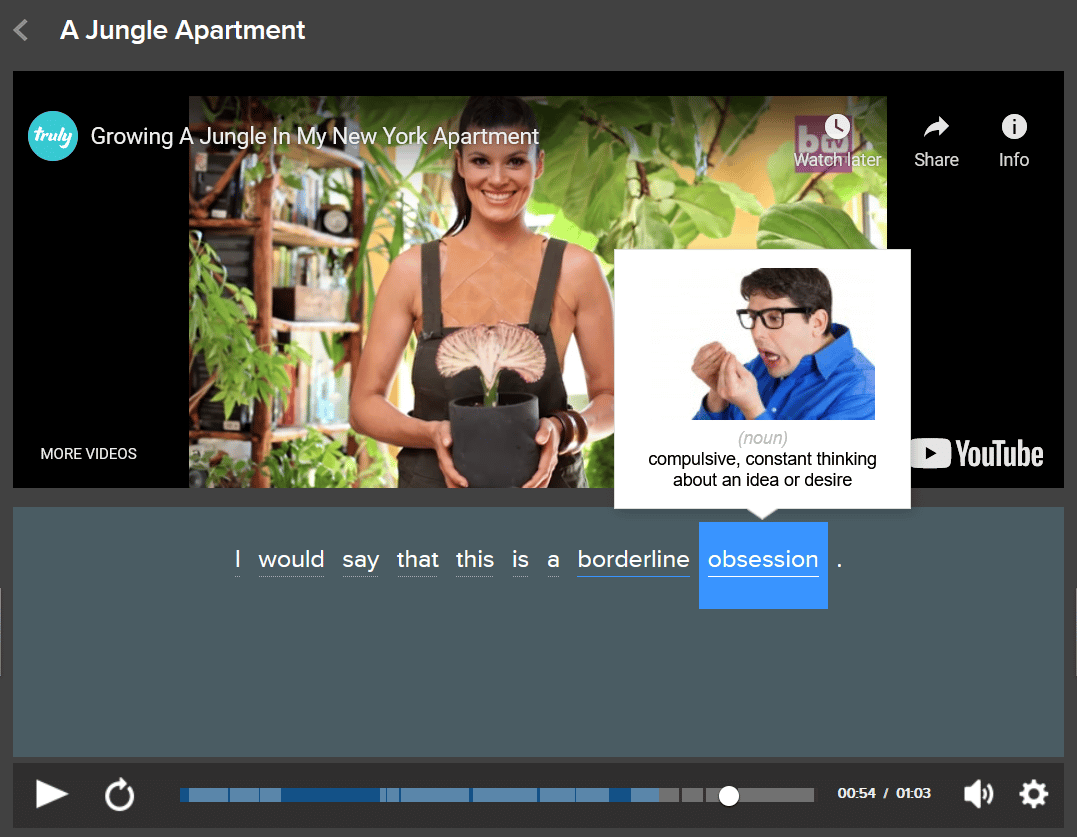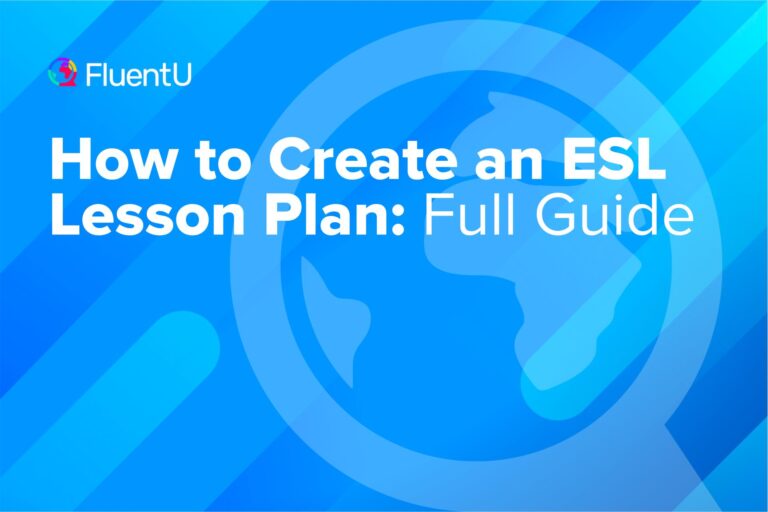10 Fun Vocabulary Games for Your ESL Classroom

Building vocabulary is an essential part of learning English. But without the right activities, learning new words can feel boring or repetitive.
To keep your ESL students engaged and entertained, incorporate some vocabulary games into your lessons. Take a look at the 10 vocabulary games below that you can whip out whenever the lesson gets dull.
Download: This blog post is available as a convenient and portable PDF that you can take anywhere. Click here to get a copy. (Download)
1. Last Man Standing
Materials needed: a ball that can be passed around
This game is fast-paced but allows students some time to think. It also encourages peer learning, as students will pick up on words they hear others speaking.
To play the game:
- Grab a ball and have all the students form a circle.
- Name a category or theme, such as things found in a kitchen, food, professions, and so on.
- Begin by tossing the ball to a student. That student will shout a word related to the theme and throw the ball to another student.
- As each person catches the ball, they need to come up with another word that fits the theme. If they repeat a word that has already been said or can’t think of a new one within a few seconds, they’re out and must sit on the sidelines. Don’t worry, they’ll still be learning!
Take things up a notch with a different version of “Last Man Standing.” Instead of naming a theme for the whole game, each student gives the next student a new theme.
For example, you might start off with “something red.” The first student to catch the ball could say “strawberry” and then chooses another topic like “animals” and throws the ball to the next student. This makes the game much more difficult, since students can’t think of a word until they know what their theme is.
2. Pictionary
Materials needed: cards from the Pictionary board game (or make your own), a chalkboard/whiteboard and something to keep time
Most English speakers are familiar with the drawing game Pictionary. You can use the cards from the actual board game to create a classroom activity that will thrill your students.
To play in a classroom with many students, it’s not very practical to use the game board. This means you’ll be using the chalkboard or whiteboard at the front of the room.
- Divide the class into two teams and create a small column for each team on one side of the board. You’ll record their points here.
- Have one person from Team A come up to the front. Have the student draw a card (try using Pictionary Junior cards if the adult ones are too advanced for your class). Alternatively, you can write words on slips of paper for students to choose.
- The student must convey the word to his or her team using only drawings. Students cannot use words, symbols or hand gestures.
- Limit the time to three minutes maximum. Each correct word is a point and the first team to get 10 points is the winning team.
3. Charades
Materials needed: slips of paper with vocabulary words written on them, something to keep time
Charades is quite similar to Pictionary, but it uses actions to communicate the secret word in place of photos. This is a great game for those days when your class is dragging and people are falling asleep. Get them up and moving!
- Write down words on slips of paper for students to choose from. Verbs are likely to be the easiest, but you can also use more complicated words, provided you are sure most of the students know them.
- Divide the class into two teams and have one person from each team choose a piece of paper and act out the word.
- The teams must guess the correct word before three minutes run out. For each correct word, that team receives a point. The team that hits ten points first is the winning team.
4. Taboo Words
Materials needed: pieces of paper with vocabulary words written on them, something to keep time
Taboo Words helps students practice using synonyms and descriptions.
- Separate the class in half and have the two teams sit on opposite sides of the room, facing each other.
- Each team will choose a person to sit in front of their team, facing them in the “hot seat.” You’ll stand behind the students and hold up a piece of paper with a word on it. The students in the hot seats will not be able to see these papers.
- Teams have three minutes (or any amount of time you want to set) to get their hot seat member to say the word on the paper. The catch is, they can’t say the word under any circumstances.
If you have more than 12 students in a class, things can get a little chaotic with this game. In this case, it’s usually simpler to divide everyone into teams of 5–6 people and have only one team go at a time.
5. 20 Objects
Materials needed: a desk or table, 20 small items and a sheet or something similar to cover items with
Test your students’ memories and vocabulary at the same time with this fun game!
- Arrange the objects on the desk and let students gather around to look at them.
- After one minute, cover everything with a sheet (or something similar) and send everyone back to their seats.
- Each student should write out as many items as they can remember on a piece of paper, all in English.
- When everyone is done, write a list of the items on the board and allow students to self-correct. Alternatively, you can call out the objects and give a point for each one that is correctly written.
6. Categories
Materials needed: a piece of paper and something to write with for each student
Students will beg to play this game once they get the hang of it! It’s a great way to fill up the last few minutes of class, too.
- Have students draw six columns on their paper and write a category at the top of each column. You can choose categories that fit what you’ve been studying in class or go with some basics. Popular categories include food, names, cities or countries, furniture, verbs and clothing.
- Choose a random letter and write it on the board.
- Give students enough time to write down a word for each category that starts with that letter. Or, make it a race to see who can write a word for each category first. When they’re done, they yell “Categories!” and everyone must stop.
- You can repeat with new letters as many times as you like.
For more advanced students, you can push them to come up with more unique words by awarding 10 points per completed category if no other student wrote the same word or 5 points if more than one student wrote the word.
7. Letter Scramble
Materials needed: a list of vocabulary words
This is a fun game that you can use at the end of class when you need to fill time but also want to make it educational. Beyond working with the vocabulary your students are learning, this game will stretch their brains and make them think in a different way.
- Take a list of words that your students have recently learned and write a scrambled version of each on the board.
- Allow students to unscramble the words on their paper.
- The first student to finish deciphering all the words wins.
You can also have each student find a word in their book or materials and write a scrambled version on the board one at a time. Then have the whole class try to figure it out together!
8. Chalkboard Acronym
Materials needed: a chalkboard and chalk or whiteboard and markers
This is a fun way to see how many words your students have learned—the result might surprise them!
- Write a word vertically on the board.
- Ask students to come up, one at a time, to write a word starting with each letter of the vertical word. For example:
Cute
Under
Porcelain
Make this tougher by requiring the words to be related to the acronym. Or add some competition by dividing the class into two teams and having them race to finish filling in the words.
9. What Am I Thinking Of?
Materials needed: blank pieces of paper and something for students to write with
If you’ve ever played 20 Questions, you already know how this game goes. To make it a little easier on your students, however, you’re going to include some clues.
- Pair students up and have them think of an object.
- Each student should write 5-10 words describing the object on a piece of paper.
- When you call time, the students swap papers and try to figure out what the other person described.
- The first team to have both words guessed correctly wins.
10. Word Bingo
Materials needed: bingo sheets with a 4×4 grid and a vocabulary word in each square, something to cover squares with (or pencils with erasers)
You’ll need to do a little preparation for this game, but it’s well worth it.
Hand out your bingo sheets (each one should be unique) and have students mark the correct word (and repeat it out loud) when you call it out. The first person to finish marking their entire page wins.
There are some fun variations to Word Bingo!
- Picture Bingo: Use pictures on the Bingo card and call out the words that relate.
- Synonym Bingo: Get those brains working by giving students a word that means the same thing as a word on their card.
- Antonym Bingo: This is just as it sounds. Call out the antonyms of words on their cards and see how many students get it.
- Video Bingo: Instead of calling out individual words, make the game more challenging by playing a video that has the words on students’ bingo cards. This will encourage students to listen closely and provide a more natural way to practice.
You can use FluentU for this variation of the Bingo game. Choose from over 1,000 authentic videos in English by searching for specific words to find a video that features them, or choose a video aligned with your students’ interests (like a scene from their favorite movie).
Each video has a key word list before you play it, which you can use to populate your Bingo boards. And with the program’s interactive subtitles, the students won’t have a problem catching each word on their Bingo sheet as it comes up.
These vocabulary games will make your ESL lessons a little more exciting. They also incorporate a variety of different language skills including reading, speaking and listening.
Whatever game you choose, try to maintain a good balance of fun and productive learning. And keep in mind that games make great rewards for when your students do well in class!
Download: This blog post is available as a convenient and portable PDF that you can take anywhere. Click here to get a copy. (Download)
And One More Thing...
If you like learning English through movies and online media, you should also check out FluentU. FluentU lets you learn English from popular talk shows, catchy music videos and funny commercials, as you can see here:
The FluentU app and website makes it really easy to watch English videos. There are captions that are interactive. That means you can tap on any word to see an image, definition, and useful examples.
For example, when you tap on the word "searching," you see this:
Learn all the vocabulary in any video with quizzes. Swipe left or right to see more examples for the word you’re learning.

FluentU helps you learn fast with useful questions and multiple examples. Learn more.
The best part? FluentU remembers the vocabulary that you’re learning. It gives you extra practice with difficult words—and reminds you when it’s time to review what you’ve learned. You have a truly personalized experience.
Start using the FluentU website on your computer or tablet or, better yet, download the FluentU app from the iTunes or Google Play store. Click here to take advantage of our current sale! (Expires at the end of this month.)










